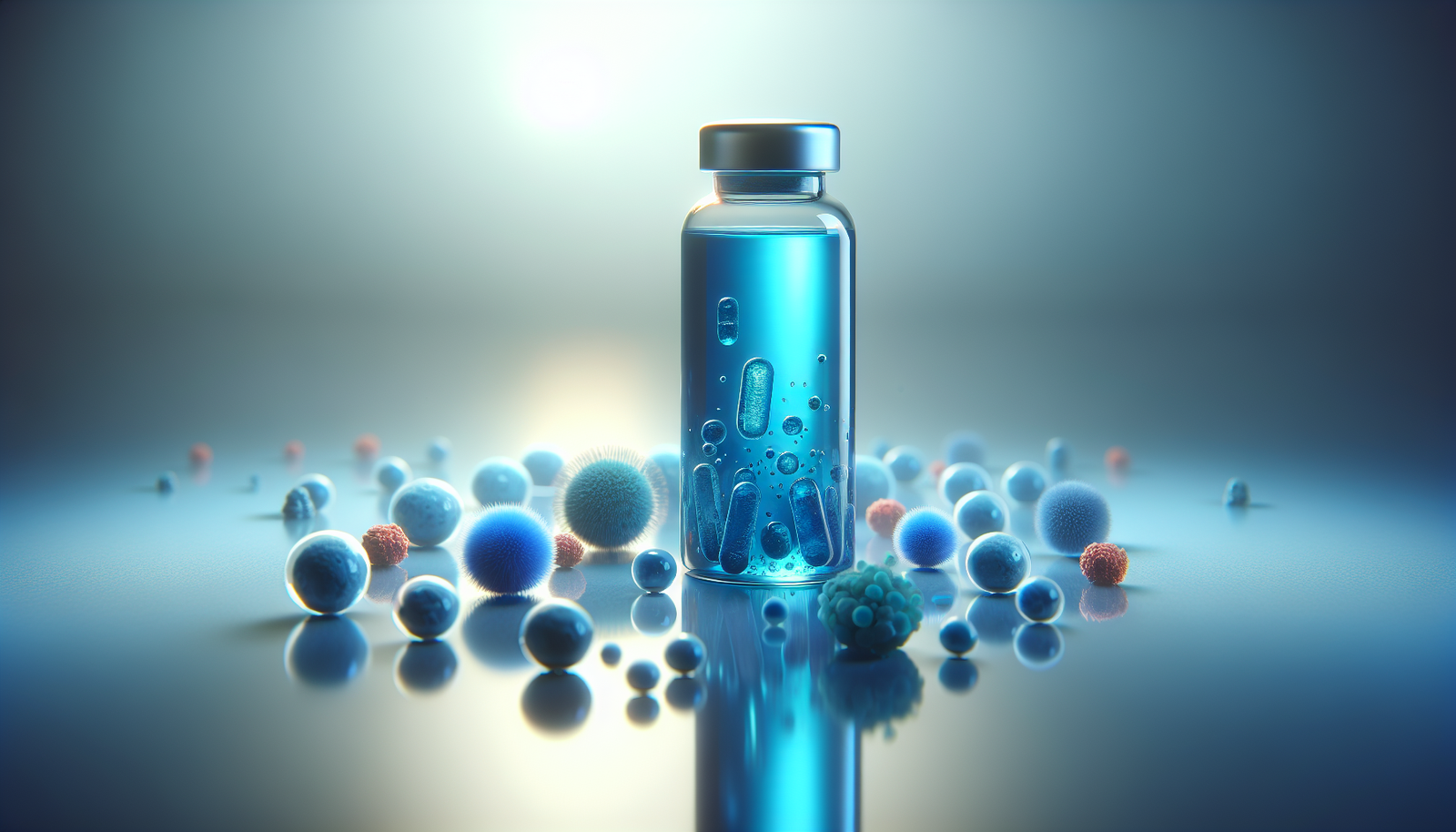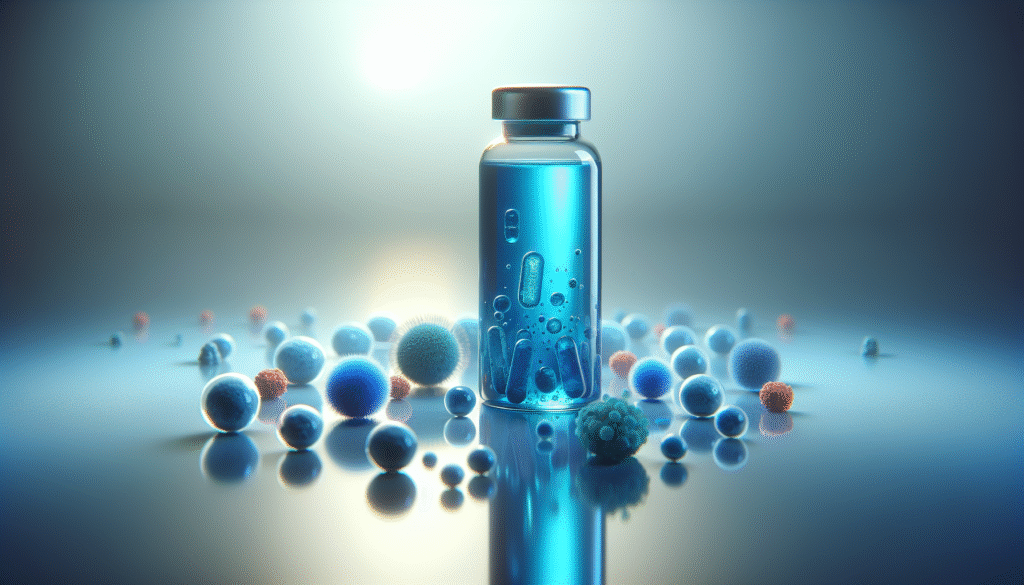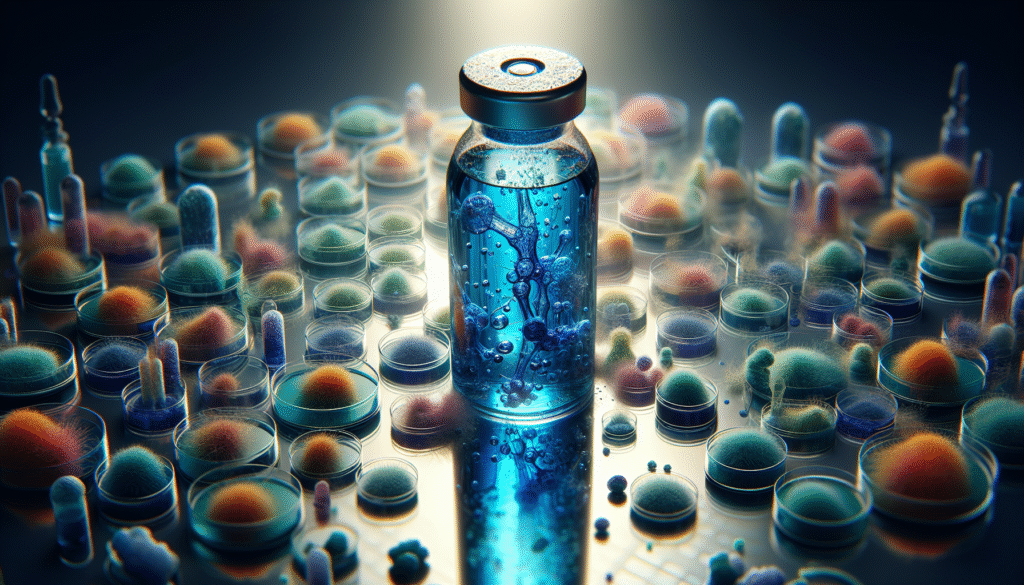
What is the first thing that comes to your mind when you hear the phrase “Methylene Blue”? Perhaps you think about its vibrant color or its applications in various fields, but have you considered its effects on microorganisms? Understanding Methylene Blue is crucial, especially when delving into the intricate world of microbiology.

Understanding Methylene Blue
Methylene Blue is an organic compound with the molecular formula C16H18ClN3S. It appears as a blue dye and is often used in biological and chemical laboratories. Its utility extends beyond aesthetics; it plays a significant role in various biological applications. Originally developed as a dye for textiles, its properties have garnered attention in medical and scientific domains.
Historical Context
The introduction of Methylene Blue dates back to the late 19th century. Initially, it was synthesized as a dye, but researchers soon identified its potential as a medicinal agent. Its first documented medical use was in the treatment of malaria, and it helped pave the way for further investigations into its biological effects.
Chemical Properties
In its chemical structure, Methylene Blue features a phenothiazine core, which is responsible for its color and various reactive properties. It is soluble in water and has distinct redox properties, enabling it to function as an electron donor or acceptor. This unique characteristic plays a pivotal role in its action against microorganisms.
Mechanism of Action Against Microorganisms
One of the most intriguing aspects of Methylene Blue is its mechanism of action against microorganisms. It exhibits antimicrobial properties, making it a candidate for treating infections caused by various pathogens.
Antimicrobial Properties
Research suggests that Methylene Blue can inhibit the growth of both bacteria and fungi. It can also function synergistically with other antimicrobial agents, enhancing their effectiveness. This dual action is particularly valuable in combating infections that are resistant to conventional treatments.
Role in Oxidative Stress
Methylene Blue induces oxidative stress in microbial cells. By generating reactive oxygen species (ROS), it damages cell membranes, proteins, and nucleic acids within microorganisms. This oxidative damage ultimately leads to cell death, demonstrating Methylene Blue’s potential as a therapeutic agent.
Photosensitization
Another noteworthy mechanism by which Methylene Blue affects microorganisms is through photosensitization. When exposed to light, Methylene Blue can act as a photosensitizer, generating reactive species that further contribute to cellular damage. This property has therapeutic implications for treating infections involving surface lesions.
Applications of Methylene Blue in Microbiology
The application of Methylene Blue in microbiology is diverse and significant. Its unique properties have led to various uses in research and clinical settings.
Diagnostic Use
In microbiology, Methylene Blue serves as a vital staining agent. It allows for the visualization of microorganisms under a microscope. When combined with other dyes, it enhances contrast, making it easier to identify specific bacterial strains.
Treatment of Infections
In clinical settings, Methylene Blue has been explored as a treatment for infections caused by resistant bacteria. Its ability to function in low concentrations while still exhibiting antimicrobial properties makes it an attractive option for researchers seeking alternative therapies.
Use in Parasitology
In addition to bacterial and fungal applications, Methylene Blue has shown efficacy against certain parasites. Researchers have investigated its use in treating infections caused by protozoa and helmints, demonstrating its broad-spectrum antimicrobial potential.
Research Findings on Methylene Blue
Numerous studies have been conducted to investigate the effects of Methylene Blue on various microorganisms. These findings provide valuable insights into its potential applications and limitations.
Bacterial Inhibition
A range of studies indicates that Methylene Blue can effectively inhibit the growth of both Gram-positive and Gram-negative bacteria. Its concentration and exposure time directly influence its efficacy. For instance, lower concentrations may not effectively hinder the growth of resistant strains, while higher concentrations demonstrate more substantial inhibitory effects.
Fungal Activity
Research on the antifungal properties of Methylene Blue has revealed promising results. Studies show that it can inhibit the growth of notable fungi such as Candida albicans and Aspergillus species. The mode of action is believed to be similar to its antibacterial effects, involving oxidative stress induction.
Effectiveness Against Biofilms
Biofilms are protective layers formed by clusters of microorganisms that can lead to chronic infections. Methylene Blue has shown potential in disrupting these biofilms, making it an area of active research. This disruption can enhance the susceptibility of biofilm-associated pathogens to antibiotics.
Resistance Mechanisms
Interestingly, some microorganisms have demonstrated resistance to Methylene Blue. Understanding the mechanisms behind this resistance is crucial for optimizing its use. Research is ongoing to identify genetic and metabolic adaptations that allow specific pathogens to survive in the presence of this compound.

Safety and Toxicity Considerations
While Methylene Blue offers various benefits, it is essential to conduct a comprehensive assessment of its safety and toxicity, especially when considering therapeutic applications.
Cytotoxicity
Studies investigating the cytotoxic effects of Methylene Blue on human cells have produced mixed results. At low concentrations, Methylene Blue appears to have minimal cytotoxic effects, but toxicity can increase with higher doses. It is vital to balance the therapeutic potential against potential side effects, particularly in prolonged applications.
Allergic Reactions
As with many medications, allergic reactions to Methylene Blue can occur, albeit infrequently. Awareness of potential hypersensitivity is crucial when administering this compound in clinical settings. Monitoring patients for adverse reactions will ensure safer practices.
Environmental Impacts
The environmental implications of using Methylene Blue should also be considered. Its widespread use in aquaculture and wastewater treatment raises questions about its effects on ecosystems. Studies on the degradation of Methylene Blue and its impact on aquatic life are necessary to understand its broader implications.
Future Directions in Research
The future of research on Methylene Blue holds promise as scientists continue to explore its multifaceted properties and potential applications.
Novel Combinations
Studying Methylene Blue in combination with existing antimicrobial agents could enhance treatment efficacy, particularly for resistant infections. Combination therapy could help mitigate resistance development and increase the overall success of treatments.
Targeted Applications
Targeting specific pathogens with Methylene Blue could open new avenues for treatment. Investigating its effects on emerging pathogens or those associated with particular diseases will further underscore its utility in modern medicine.
Investigating Mechanisms of Resistance
Understanding resistance mechanisms is vital for maximizing the therapeutic potential of Methylene Blue. Future research may focus on genetic studies of resistant strains, paving the way for improved treatment protocols.
Conclusion
Methylene Blue’s complex interplay with microorganisms reveals its potential as an invaluable tool in microbiology and medicine. Its antimicrobial properties, versatile applications, and the promising research landscape underscore its significance in addressing a variety of microbial challenges.
Through continued study, you can unlock even greater insights into Methylene Blue, leading to the development of new therapies and methodologies for tackling infectious diseases. The future holds promise, and advancing your understanding of this compound may contribute to innovative solutions in healthcare and scientific research.